11197 A WATERCOLOR DRAWING REPRESENTING A CHANDELIER, EXECUTED BY THE PARISIAN BRONZIER FRANÇOIS RÉMOND (C. 1747-1812), AFTER DRAWINGS BY FRANÇOIS-JOSEPH BÉLANGER (1744-1818), CHARLES PERCIER (1764-1838) AND PIERRE LÉONARD FONTAINE (1762-1854) French. Circa 1800. Measurements: Sight Size: Height: 95″ (241.5 cm); Width: 56″ (142.5 cm). Framed: Height: 100″ (254 cm); Width: 61″ (155 cm).
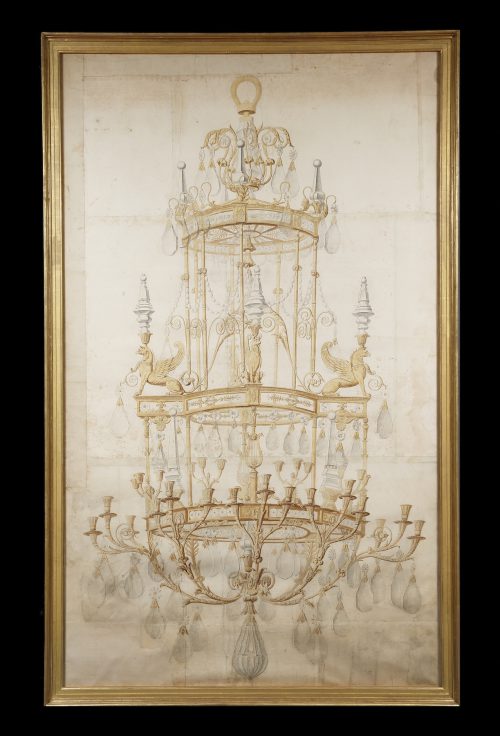
Research
Watercolor and ink on sectional paper.
Provenance:
Galerie Monluc, Paris Early 1990s
This studied watercolor represents a complete, full-size chandelier made as a presentation drawing for potential customers. The chandelier it depicts was executed by the Paris bronzier François Rémond, after drawings by Francois-Joseph Bélanger, Charles Percier and Pierre Léonard Fontaine, and belongs to a small and rare group of such life-size drawings depicting furnishings as finished products.
Other drawings from this known group include a psyche and dressing table designed by Pierre-Paul Prud’hon, made by the bronze artist Pierre-Philippe Thomire and the goldsmith Jean-Baptiste Claude Odiot on the request of the City of Paris in 1810 as a gift to the Empress Marie-Louise, which had been preserved in the Odiot archives (figure 1). A fourth item is a drawing of a scabbard in tortoiseshell and metal marquetry, which was sent circa 1715 to Augustus the Strong, Elector of Saxony and King of Poland, and is now preserved in the Kupferstichkabinett, Dresden.1
The chandelier reproduced here measures approximately 7 ½ French feet2 (243 cm) high and 14 French feet in circumference (453 cm), with a diameter of approximately 144 cm. Archival documents indicate that it was part of a pair, each with forty-eight lights, executed circa 1800. Two descriptions of these chandeliers are known; one printed in 1819 indicates that the chandeliers were made “from the drawings of MM. Bellanger [al. François-Joseph Bélanger], Percier and Fontaine.” The second document is a manuscript dating to 18283 and describes the design as deriving “from the drawings of Messieurs Percier and Fontaine, architects of the Louvre and the Tuilleries.”
It is doubtful that Bélanger, Percier and Fontaine collaborated on the design, as their personal styles were so different. It is more likely that the original concept of the chandelier was first developed by Bélanger and was later modified by Percier and Fontaine. It is also possible that Rémond took it upon himself to combine two different projects from each of these architects. It is interesting to note that the description of the chandelier from 1828 eliminates the name of Bélanger altogether, perhaps in the hopes of maintaining commercial appeal; he had died in 1818 and was all but forgotten ten years later, while Percier and Fontaine were still active and quite famous.
After Rémond’s death in 1812, his widow remarried a M. de Bois-Richard, and it was under the name of Madame Rémond-de-Bois-Richard that she herself presented his works at the Exposition des Produits de l’Industrie of 1819. The chandeliers were accepted and exhibited in the section for Rock Crystal objects, and she was awarded an honorable mention in the memory of François Rémond. It is evident that she could not claim a more prestigious award, since one of the main requirements guiding the members of the jury was novelty of design, which was lacking in the chandeliers as by this date they were twenty years old and no longer in the style of the day.
The Viscount Hericart de Thury gives a rare and full description of the chandeliers in his Rapport du Jury d’admission des produits de l’Industrie du département de la Seine à l’exposition du Louvre…:
Two large twin chandeliers in rock crystal, 2 meters 25 high, by 4 meters 50 in circumference, of forty-eight lights each, executed by M. Rémond, formerly connected to the house of Mgr le Comte d’Artois, on the drawings of MM. Bellanger [al. Bélanger], Percier and Fontaine; they have never left their workshops, they have the form of an obelisk and are divided by three rings each supported by four rising columns; of the projecting consoles, which number four, decorated with lyres, swans, etc. are surmounted by four large griffins; all the bronzes are chiseled and matte gilt.
The crystals are perfectly worked, the pendants are of a very large volume and very fine essence; the obelisks are remarkable for their grandeur and their proportions; Each pendeloque is adorned with stars with its fastenings in matte gilt-bronze and trimmed with small rosettes to hold the stars.
The girandoles and chains, formed of grains of rock crystal are trimmed and adorned with bronze beads also in matte gilt.
These chandeliers, which are of the arabesque genre and of an elegant form, were each estimated:
1°. For the cut crystals 35 000 Fr
2°. Gold and bronze 18 000
- Chisleing 12 000
Et 4°. Frame and workmanship 12,000
______
A total of 77 000
And for the two together 154 000 4
The pair of chandeliers never found buyers, at that time nor later on, and the circumstances surrounding their execution is unknown. As stated in the Rapport du Jury the chandeliers were reputed to have never left the bronze workshops, being shown to the public for the first time at the Exposition des Produits de l’Industrie in 1819, several years after Rémond’s death. The chandeliers may have been an independent project on the part of Rémond, or perhaps an order that for some reason was never delivered to its patron in the end. The value recorded for these works, 77,000 francs each, makes the first hypothesis unlikely.
Nine years later, on the 6th of February 1828, M. de Bois-Richard, in the name of his wife, proposed the chandeliers to the Vicomte de La Ferté, directeur général du Mobilier de la Couronne pour le service du Roi, for the sum of 70,000 francs, an offer that the administrator declined.5
The letter of offer to La Ferté provides some further detail about the composition of the chandeliers, as well as the original itemized cost for the pair (figure 2). The lights were in two gradations of twenty-four candle arms each, and their number could be reduced at will, or increased up to sixty. The extreme quality of the rock-crystal decoration is emphasized and it is easy to see that some of the pendants are reemployed elements taken from older chandeliers. At that time, as well as in the eighteenth century, it was a recurring practice to re-use crystals due to the high cost of the raw material.
In support of his proposition, the letter from M. de Bois-Richard makes reference to the chandeliers of the Throne Room of the Tuilleries palace, which were similar in size. The Tuilleries Chandeliers, identical to those of the throne room of the Château de Fontainebleau, still in situ (inventory no. F 600 C) (figure 3), were adorned with pyramids of rock crystals similar to those of Rémond’s chandeliers.
These chandeliers, with their large number of candle arms (48), initiated to some extent a trend toward gigantism. At the end of the Empire, the bronzier Rabiat proposed a model with forty-eight lights; his brother Lefebvre presented the same model in gilded bronze, with or without crystals, in six versions (40, 36, 20, 18, 12, and 6 candle arms). One of the three chandeliers in the great salon at Colonnes du Marshal Berthier had fifty-six. Finally in 1823, an apex was reached by William II of Hesse, who received five crystal chandeliers from Paris for the ballroom of his palace at Kassel, the largest of which, approximately three meters in diameter, held two hundred and thirteen lights in three rows.
A photograph dating from the early 20th century shows one of the realized chandeliers, likely taken in situ at Parisian dealer’s gallery in the 1920s (figure 4).
As stated earlier this drawing of Rémond’s chandeliers is notable not only for its life-size scale, but also for fusion of preexisting Baroque crystal pendants employed on a neoclassical frame. The crystal spires and baluster-form finials on the heads of the griffins in the drawing are of Baroque origin, and the “mandolin” shape drops are also earlier in style than the bronze elements. The form of the griffin recalls late-eighteenth century models, particularly those designed as candlesticks by Sir William Chambers circa 1771 and remodeled in black basalt by Wedgwood circa 1780 (figure 5), as well as a griffin-mounted gilt-bronze candelabrum in the Musée Nissim Camondo, Paris circa 1785 (figure 6).
The present drawing shares important parallels with a drawing by Percier and Fontaine, published in their 1802 volume Recueil de Decorations Interieures, which is reproduced and discussed in Hans Ottomeyer’s Vergoldete Bronzen (1986) (figure 7). Interestingly, Mr. Ottomeyer notes in conjunction with the Percier example that “Percier had received a commission from the diplomat François Bertrand de Chauvelin circa 1798, to create a chandelier specifically to accommodate pre-existing crystal pendants; because not many crystals were extant as the basis for its construction, the gilt-bronze frame became a key element, defining the chandelier’s overall form.”6 In the present example pre-existing crystals are much more plentiful as well as being more overtly baroque in their massivity and shaped cut. This drawing is therefore very remarkable in being a document to the reuse of earlier rock crystal pendants on gilt bronze chandeliers of the highest caliber.
The drawing is further remarkable in its relatively free execution, combined with the unusual use of perspective, demonstrating to the patron a view of the chandelier partially from below and turned fractionally to the right. This is in contrast to the published Percier and Fontaine examples, which present full side views and have a strongly two-dimensional appearance. The present drawing attempts to illustrate the design most realistically.
We are extremely grateful to Jean-Dominique Augarde and Hans Ottomeyer for their help in compiling this entry.
Footnotes:
- André Charles Boulle, 1642-1732, Un nouveau style pour l’Europe, Francfort 1989, n° 86.
- That is to say 90 inches. The French inch is worth approximately 2.7066 cm.
- Paris, Archives nationales de France, 03 1923.
- L. Héricart de Thury, Rapport du Jury d’admission des produits de l’Industrie du département de la Seine à l’exposition du Louvre, comprenant une notice statistique sur ces produits, Paris, 1819, n° 416, pp. 235-236.
- Cf. note 3.
- Ottomeyer, Hans, Peter Pröschel, and Jean-Dominique Augarde. Vergoldete Bronzen: Die Bronzearbeiten Des Spätbarock Und Klassizismus. München: Klinkhardt & Biermann, 1986. 358.
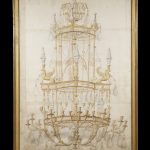

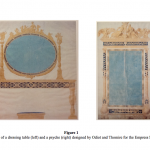
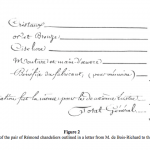
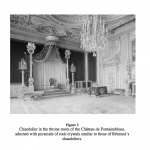
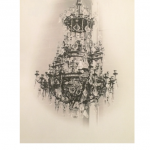
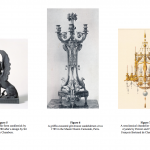
Comments are closed.